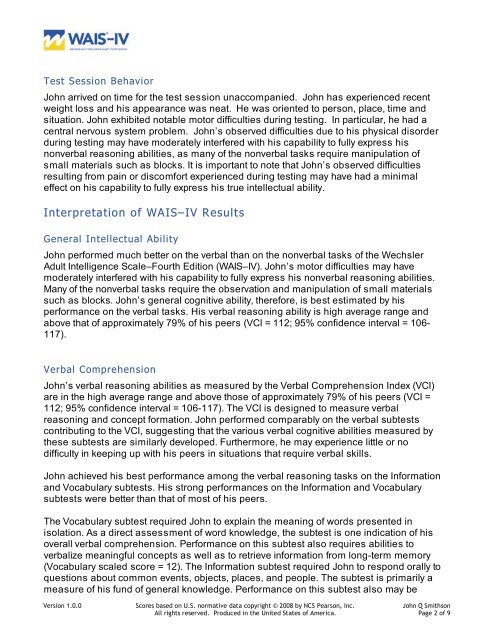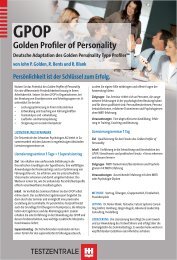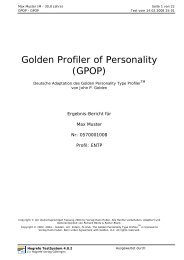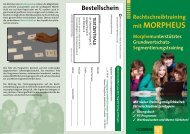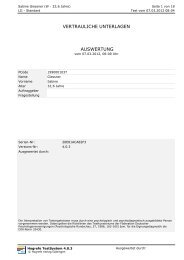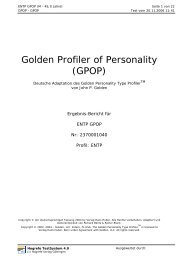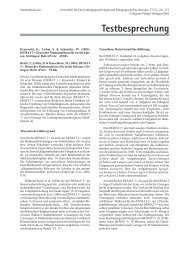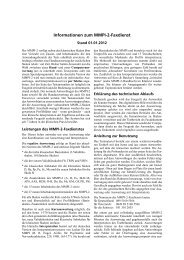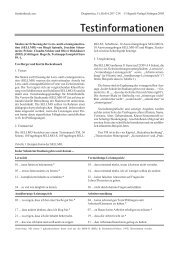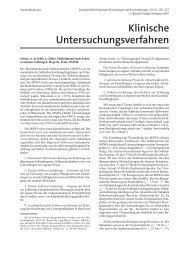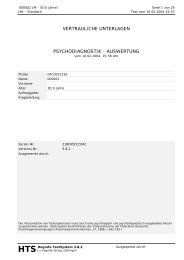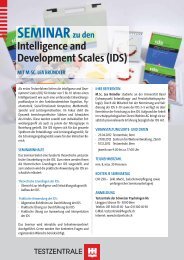WAIS –IV ReportWriter - Pearson
WAIS –IV ReportWriter - Pearson
WAIS –IV ReportWriter - Pearson
You also want an ePaper? Increase the reach of your titles
YUMPU automatically turns print PDFs into web optimized ePapers that Google loves.
Test Session Behavior<br />
John arrived on time for the test session unaccompanied. John has experienced recent<br />
weight loss and his appearance was neat. He was oriented to person, place, time and<br />
situation. John exhibited notable motor difficulties during testing. In particular, he had a<br />
central nervous system problem. John’s observed difficulties due to his physical disorder<br />
during testing may have moderately interfered with his capability to fully express his<br />
nonverbal reasoning abilities, as many of the nonverbal tasks require manipulation of<br />
small materials such as blocks. It is important to note that John’s observed difficulties<br />
resulting from pain or discomfort experienced during testing may have had a minimal<br />
effect on his capability to fully express his true intellectual ability.<br />
Interpretation of <strong>WAIS</strong><strong>–IV</strong> Results<br />
General Intellectual Ability<br />
John performed much better on the verbal than on the nonverbal tasks of the Wechsler<br />
Adult Intelligence Scale–Fourth Edition (<strong>WAIS</strong><strong>–IV</strong>). John’s motor difficulties may have<br />
moderately interfered with his capability to fully express his nonverbal reasoning abilities.<br />
Many of the nonverbal tasks require the observation and manipulation of small materials<br />
such as blocks. John’s general cognitive ability, therefore, is best estimated by his<br />
performance on the verbal tasks. His verbal reasoning ability is high average range and<br />
above that of approximately 79% of his peers (VCI = 112; 95% confidence interval = 106-<br />
117).<br />
Verbal Comprehension<br />
John’s verbal reasoning abilities as measured by the Verbal Comprehension Index (VCI)<br />
are in the high average range and above those of approximately 79% of his peers (VCI =<br />
112; 95% confidence interval = 106-117). The VCI is designed to measure verbal<br />
reasoning and concept formation. John performed comparably on the verbal subtests<br />
contributing to the VCI, suggesting that the various verbal cognitive abilities measured by<br />
these subtests are similarly developed. Furthermore, he may experience little or no<br />
difficulty in keeping up with his peers in situations that require verbal skills.<br />
John achieved his best performance among the verbal reasoning tasks on the Information<br />
and Vocabulary subtests. His strong performances on the Information and Vocabulary<br />
subtests were better than that of most of his peers.<br />
The Vocabulary subtest required John to explain the meaning of words presented in<br />
isolation. As a direct assessment of word knowledge, the subtest is one indication of his<br />
overall verbal comprehension. Performance on this subtest also requires abilities to<br />
verbalize meaningful concepts as well as to retrieve information from long-term memory<br />
(Vocabulary scaled score = 12). The Information subtest required John to respond orally to<br />
questions about common events, objects, places, and people. The subtest is primarily a<br />
measure of his fund of general knowledge. Performance on this subtest also may be<br />
Version 1.0.0 Scores based on U.S. normative data copyright © 2008 by NCS <strong>Pearson</strong>, Inc.<br />
All rights reserved. Produced in the United States of America.<br />
John Q Smithson<br />
Page 2 of 9


